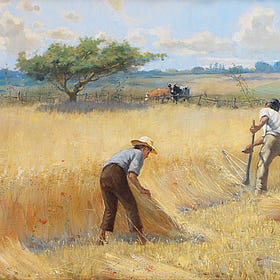The assertion made in D&C 1:30 that the Church of Jesus Christ of Latter-day Saints is “the only true and living church on the face of the whole earth with which I, the Lord, am well pleased” is a classic two-edge sword.
A good many devout saints reaffirm the “only true church” claim regularly in testimony. They find the idea exciting, empowering and deeply true. It adds great vitality and meaning to their faith.
For other members the claim strikes an exclusive tone. Plus, it seems inconsistent with their observation and experience of the broader world. To many younger members especially, the “only true church” narrative feels deeply uncomfortable. Surveys show it as a principal cause of many young members’ disaffection with the church. It seems to imply that God is not doing important work elsewhere in the world and among other faith traditions. It seems to make God too small.
Not surprisingly, many outside the church hear the claim as exclusive and divisive. But most are probably just indifferent. People aren’t asking “Which church is true?” much these days. More commonly they are asking “Why church?”
Maybe whether or not we are the “true church” isn’t the most important question. Maybe the question we should be asking is: How can we 1) confidently affirm our church’s unique calling and offer its unique gifts to God’s children while 2) affirming and embracing all the other diverse and important ways the Lord is working in the world?
So let’s unpack and examine D&C 1:30, the passage that seems to hold the power both to inspire and to vex readers. We have brought together a brilliant team to take up the question.
First, we invited one of our advisory board members, Philip Barlow, to give us his perspective. In his deep dive into the subject, he starts by sketching out some of the problems that attach to the “only true church” narrative, and then suggests a productive path forward:
Patrick Mason, who currently holds the Arrington Chair at USU, also weighs in on the question in a wonderful essay, which is also a chapter in his book Restoration:
True and Living Church: Bearer and Receiver of Gifts
Know ye not that I, the Lord your God, have created all men, and that I remember those who are upon the isles of the sea; and that I rule in the heavens above and in the earth beneath; and I bring forth my word unto the children of men, yea, even upon all the nations of the earth?
Patrick also sat down for a conversation on the issue with our Faith Matters Podcast hosts. You can watch, listen, or read a transcript here:
In what way is our church the true church? - A conversation with Patrick Mason
This episode is part of our Big Questions project, and in it, we discuss our Big Question #12 - “In what way is our Church the true Church?”
For this conversation, we asked Patrick Mason to come back on — Patrick is the Leonard Arrington Chair of Mormon History and Culture at Utah State University. Bill Turnbull, one of the founders of Faith Matters, also joined us for the conversation.
The late Eugene England, a popular professor of literature at BYU and a prolific writer, wrote a classic essay on this question that he titled “Why the Church is as True as the Gospel.” It’s been appreciated by many thoughtful saints over the years and well worth a read.
And our emeritus advisory board member, Melissa Inouye, addressed this subject in a fun and creative way at a Faith Matters gathering in January 2020. You can watch a clip here:
And you can watch the full event here:





